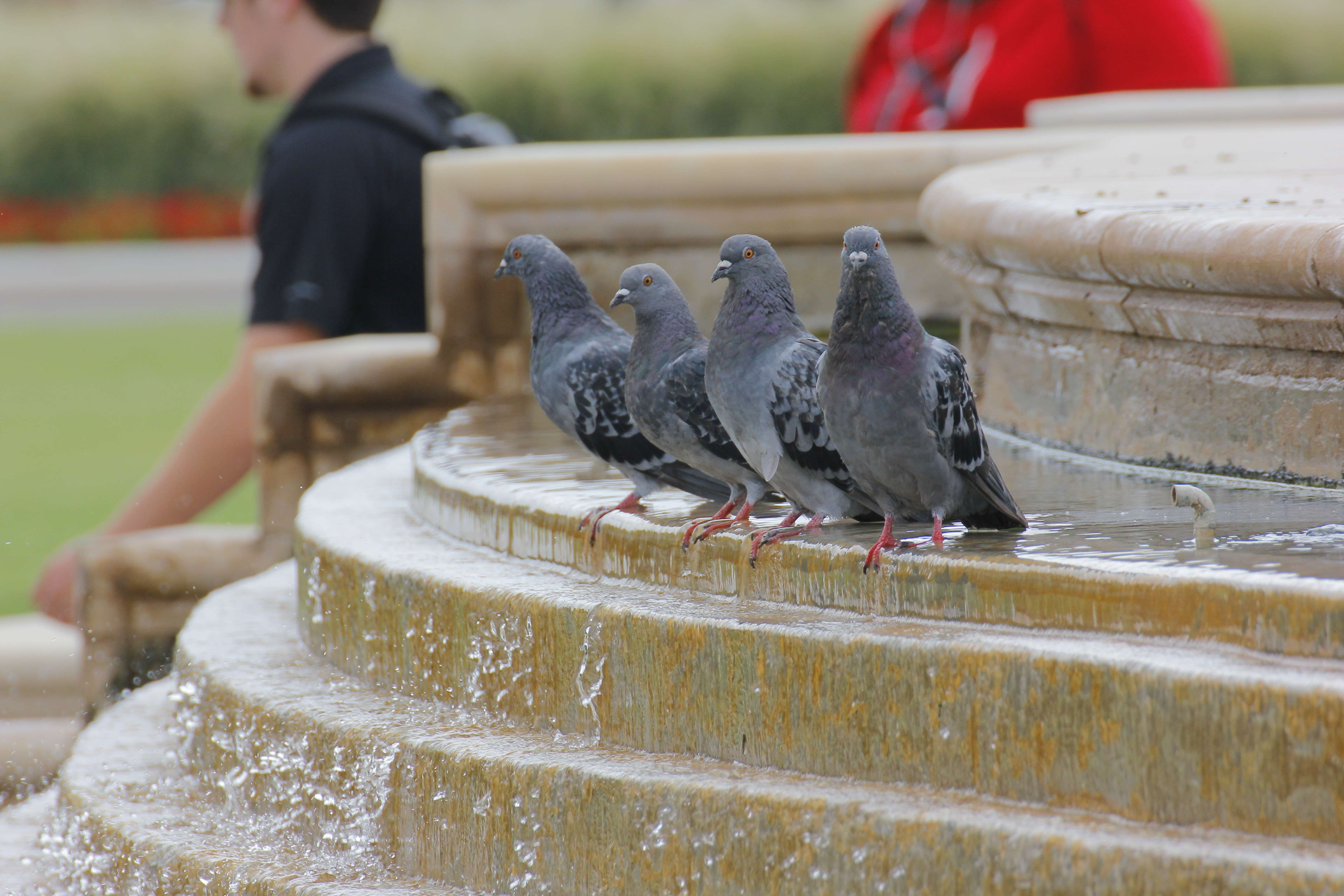Pigeon Project Story
After six years, the Pigeon Project on Texas Tech University's campus is coming to a close. Dr. R. Neal Platt II, Dr. David A. Ray, Dr. John C. Zak, Dr. Richard Stevens and research graduate assistants, Erin Stukenholtz and Tirhas Hailu have worked on this project for the past six years and made tremendous headway. Throughout the project, researchers focused on the pigeon dynamics and population control on campus to fully understand the behavioral patterns of the pigeons. Dr. Ray and Dr. Platt conducted a large study of pigeons in the region to track how they were migrating on and off campus. This was an important step in the research to identify if the Texas Tech University campus was the central hub for the pigeon colony or if it was simply a migration point.
After an extensive study across the region to include a circumference of approximately 150 miles, it was identified the pigeon colony expanded across the panhandle and was not central to the campus. This provided valuable data that assisted in preparing the plan put in place to manage the population. In 2017, researchers estimated the pigeon population on campus to be approximately 13,757 pigeons. With such an abundance of pigeons on campus, researchers needed to find a safe, non-invasive way to decrease the population size. What has been studied and found to be successful is a multiple point management program. Through the use of Avian bird wire on campus, the use of Ovo Control birth control feeds, the reduction in nesting areas and the introduction of predatory birds to campus, the overall pigeon colony has seen a reduction in the campus population. It is understood the pigeon population on campus will never be completely irradicated, but the goal is to reduce the population to a manageable level.

One of the goals of the researchers was to eliminate the desired nesting areas on campus for the pigeons. Forcing the pigeons to nest in secondary locations assists in creating a less habitable environment for successful nesting and laying eggs. Researchers recommend habitat modification to reduce the estimated large pigeon population on Texas Tech's campus. Roost and nest sites can be limited using bird wire, porcupine spikes, and netting-off nesting locations. To decrease the population on campus, Texas Tech has installed bird wire, closed off balconies, and dispensed avian birth control to limit nesting and loafing sites and decrease reproductive output.
While aviary wire has been used for years on campus, the pigeons have become accustomed to its presence and are finding ways to get between the gaps. Ovo Control is currently being dispensed on top of buildings that house large pigeon populations. There is a plan in place to continue the use of Ovo Control, pigeon birth control, through their food source, as it has proven to be successful in smaller groups. They must consistently provide this as their main food source. Even missing a few days has been found to allow Ovo Control to lose its effectiveness.
Falconry is becoming a popular and “new” method in pigeon management. Using falcons may be a useful technique if there is no way to pigeon proof an area or a building. Birds of prey can scare away pigeons and greatly influence their behavior. Ultimately, they want to curtail the pigeon population in the most humane way possible by making campus inhospitable to these birds. One future technique will be the introduction of falcon boxes on campus. Falcons are the number one enemy of pigeons; however, this will only be successful if falcons come to campus to nest. Another predatory technique using owls will be introduced to campus over the summer of 2022. The owls will be tracked through transmitters so the researchers can see where they are going and how they may be interacting with the pigeons. Great Horned Owls do hunt pigeons, but the goal is that the presence of both species will create an environment of fear, so pigeons won't want to nest on campus.
This research has been invaluable to the Texas Tech campus as it is creating building standards for future construction projects. The researchers have found evidence that smaller windowsills and certain rooftop angles can decrease the chance of pigeons roosting on campus. They also know that pigeons favor patio areas and the construction of these spaces will be discouraged in the future. Dr. Zak shared that he has been at Texas Tech for 30 years and that he believes the working partnership between the Operations Division, the Biology Department and Natural Resources Management has been the best attempt by any academic unit and operational department to solve real-time campus issues.
VIDEO STORIES
CHACP 1 #2 Boiler Overhaul Story
Operations Division: Planning and Administration
-
Address
Mail Stop: 5091, Box: 45091, Physical Plant Building, 3122 Main Street, Lubbock, TX 79409 -
Phone
(806) 742- 4677 -
Email
operations@ttu.edu
